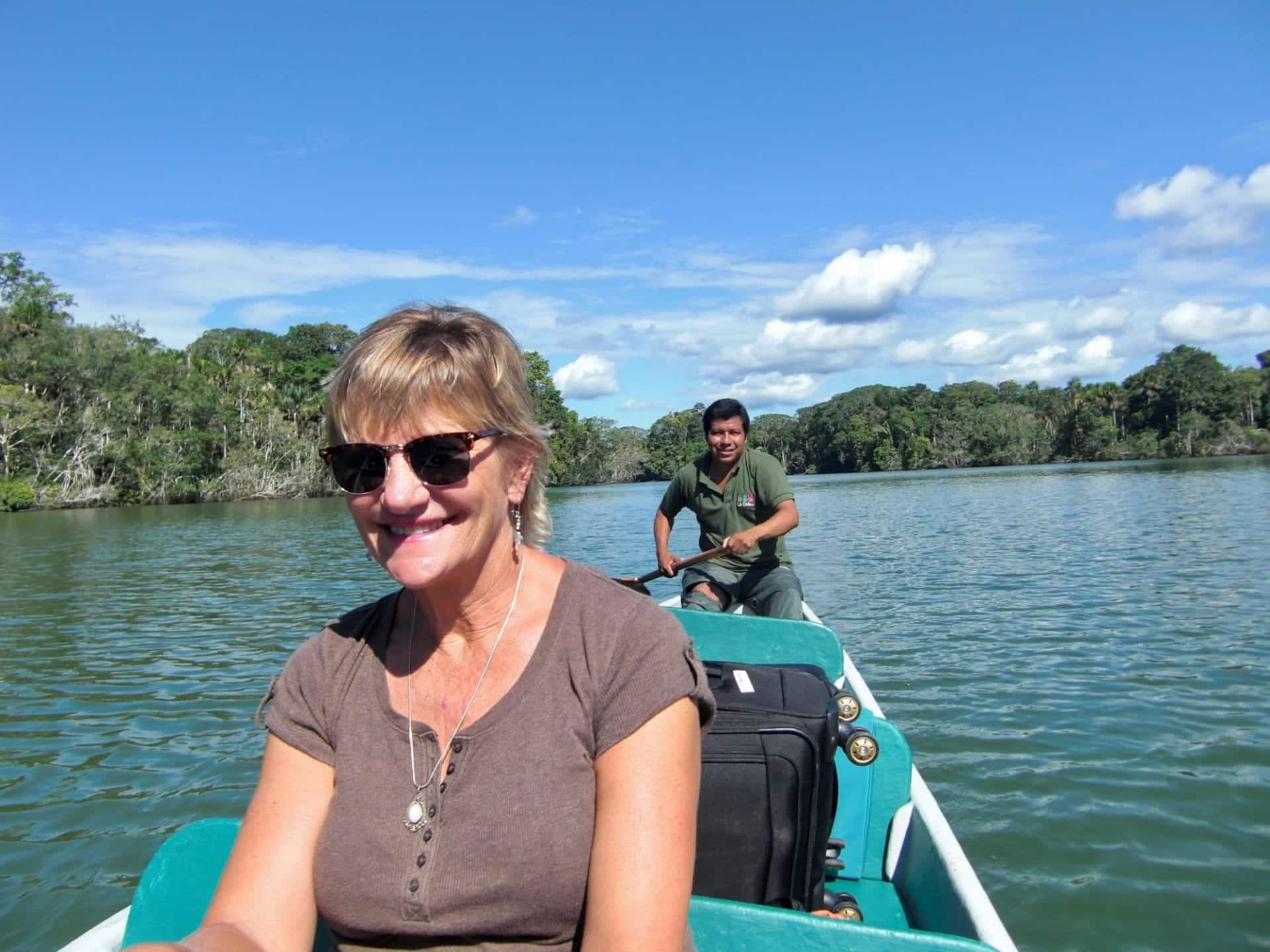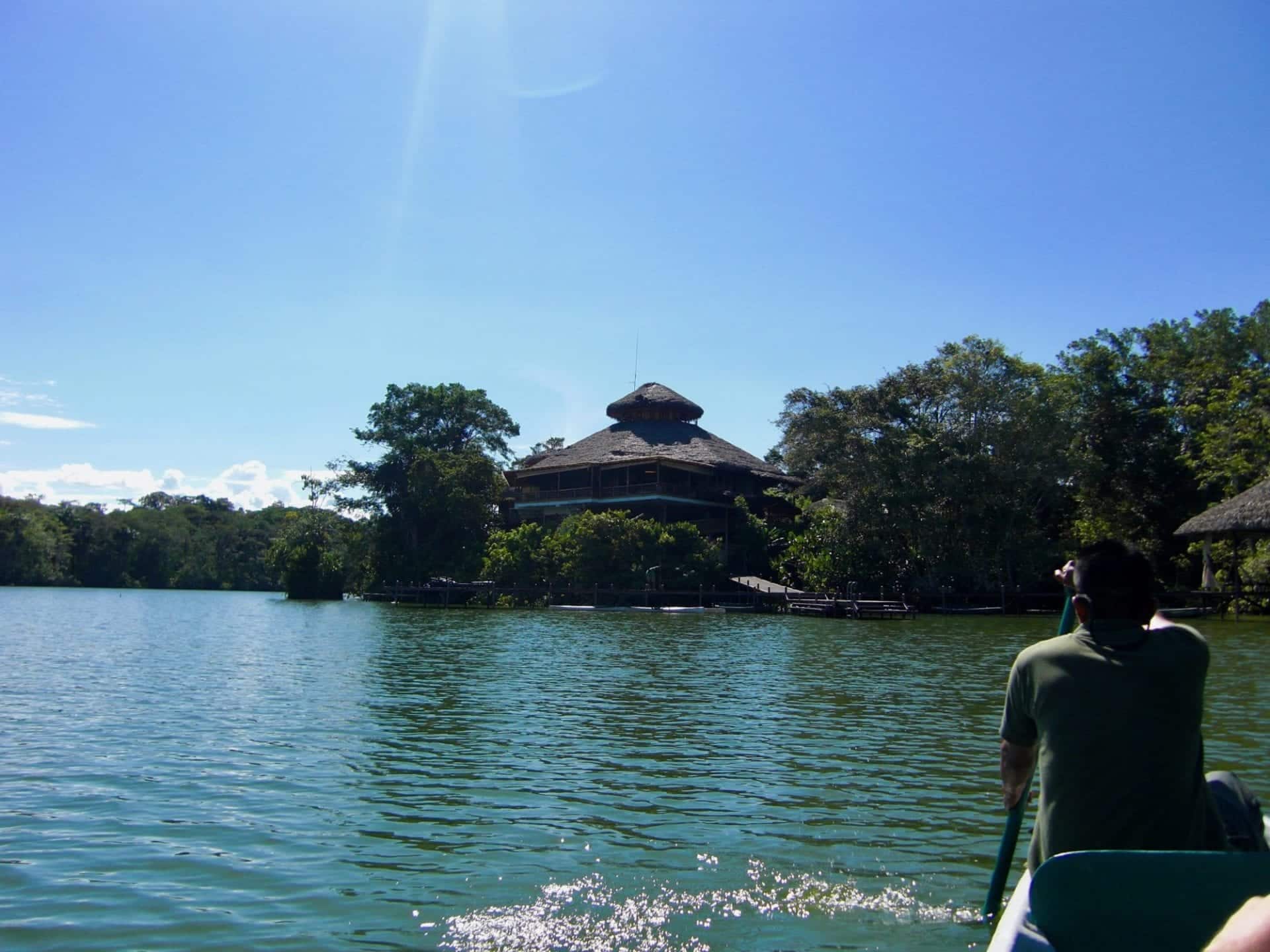Straddling the equator, about 600 miles from the mainland, the archipelago of the Galápagos Islands consists of about 19 islands (& tons of smaller islets) off the coast of Ecuador.
You will therefore not be surprised to hear that one of the most popular ways to see and experience the islands is via a cruise. I love exploring the variety of islands and terrain on a Galápagos Islands cruise.
 The entire area is a double World Heritage site (both land and sea are protected) and is where Charles Darwin developed his Theory of Evolution. This was basically his Living Laboratory.
The entire area is a double World Heritage site (both land and sea are protected) and is where Charles Darwin developed his Theory of Evolution. This was basically his Living Laboratory.
Each island boasts its own unique landscape, ranging from black, volcanic rock to white sandy beaches. Thanks to very few natural predators in the area, the wildlife is very relaxed and this means humans are granted a rather unique opportunity to interact with an impressive catalogue of animals that include the giant tortoise, penguins, marine iguanas and albatross.
On my last trip we spent 4 days on Haugan’s luxury catamaran, Ocean Spray.
This luxury boat accommodates only 16 guests, serves fabulous gourmet food and there is an expert naturalist guide on board to accompany guests on both their snorkeling and land excursions.
Over the course of 4 days we visited 3 islands; San Cristobal, Floreana and Santa Cruz. I snorkeled in incredibly pristine waters and hiked along each of these beautiful Islands. In the crystal clear seas I swam with sea lions, sea turtles, black tip sharks, 1000’s of fish, including starfish, sting rays and more.
On land, I walked with sea lions, blue footed boobies, flamingos, iguanas and giant tortoises. There was such a variety of things to enjoy, boredom simply wasn’t an option. If I wasn’t very busy experiencing something fabulous I found myself entirely occupied by thoughts regarding the fabulous beauty of the Galápagos.
And where was I whilst I was having these deep meaningful thoughts, I hear you wonder?
Well, this might be a good time to mention that the Ocean Spray did not only boast 8 spacious cabins, each with its own verandah, but also managed to offer a huge sundeck and a Jacuzzi. Let’s just say that her speed, comfort, top guides and the unforgettable itinerary will make her a very hard act to follow.
After the Galápagos Islands, I travelled to the Ecuadorian Amazon.
Such a short, unasuming little sentence.
So few words.
Folks, let us not beat around the jungle here: the journey involved amongst other things, a one-hour flight, a two-hour boat ride and a 30 minute canoe ride. And boy, was it all entirely worthwhile!


The spacious, airy cabanas at La Selva Lodge are inspired by native bamboo designs. The sounds of the rainforest soothe you to sleep at night and the singing of birds awakens you in the morning. I saw parrots, monkeys, toucans, caimans, frogs and more as we explored with our well-trained naturalist guide by foot and canoe.
The Yasuni National Park and Biosphere Reserve, located in Eastern Ecuador, is home to an impressive variety of plants, including beautiful vines, orchids and ferns and is considered by some to be the most bio-diverse place on Earth. Travel through three macro-level ecosystems, including the ‘Terre Firme’ or the lands considered too high to flood, the Varzea forest (seasonal floodplains) and the ‘Igapo’, or wetlands that remain partially flooded most of the time. Here you can catch a glimpse of impressive animals such as jaguars, caimans, toucans, macaws and marmosets.
On my journey in the Amazon we saw 100’s of parakeets in Yasuni National Park and I also visited the Kichwa community where I tried the sport of blow pipe hunting (where they put a poison dart in the blow pipe).

Colorful Quito and the Otavalo Market.
Quito is a mixture of church spires, tiled roofs, and skyscrapers glinting in the sunlight against the brooding backdrop of Volcán Pichincha. Ecuador’s capital city brims with colonial riches – beautifully preserved cathedrals, elegant old mansions, interesting museums, squares, parks and neighborhoods. The city is full of street markets selling Ecuadorian jewelry, arts and crafts. All this, and more, have earned Quito the status of World Heritage Site. And it is only in Quito where you will see such an enthralling blend of the country’s urban and traditional indigenous cultures.


Otavalo is known as home to one of the most important markets in the Andes region. This open-air bazaar is set up weekly and includes everything from traditional crafts and textiles to local food and other goods. Visitors can also expect to see locals dressed in traditional clothing – women in white, embroidered blouses, long wool skirts, woven belts and canvas sandals; and men in felt hats, traditional ponchos and mid-calf length pants.
In Otavalo you experience traditional Ecuadorian culture, while taking in the enormous beauty of the dramatic Andes Mountain peaks dotted with small villages at the same time. It is where ancient Ecuador mingles with the future.
Maybe this makes it a little easier to accept the fact that you must leave this magical land behind and return to a harsher reality.
